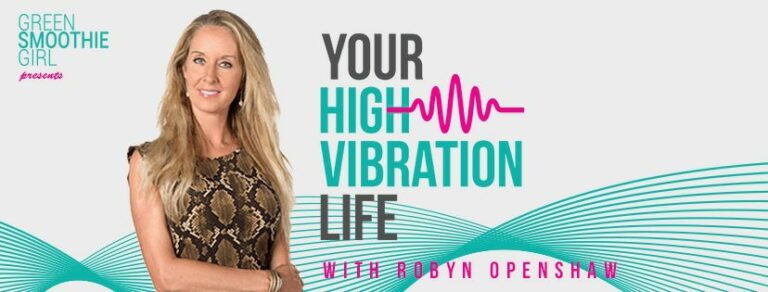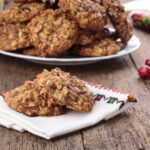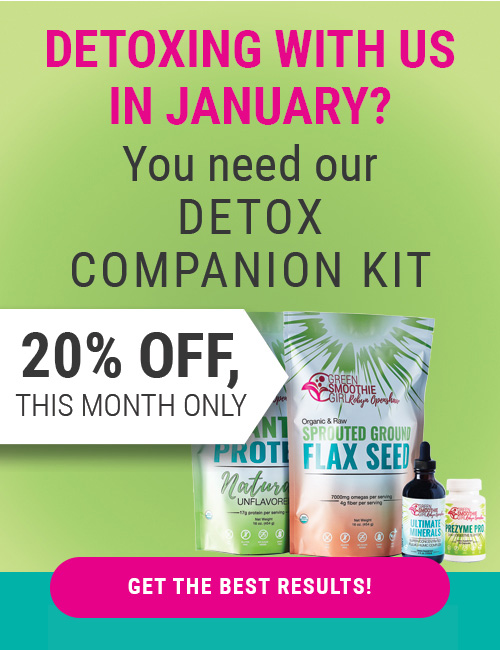Ep.10: The Good, The Bad and The Ugly of Sugar

Podcast: Play in new window
Sugar is nasty stuff. In this episode I discuss good, bad and ugly options for sugar alternatives. I feel really strongly that fuel or the food that we eat is really foundational to living a high vibration life. If you are feeling pretty good, pretty happy, doing pretty well, but you eat a lot of junk food, how much better could you feel if you had a better diet? The more people learn how deadly sugar is, the more sugar alternatives enter the market, so it’s no wonder you’re confused! I’ve researched all the sweeteners, and sifted through marketing claims, to land on the truth. In this episode I offer a gift to make it easier for you to sort through the sugar alternatives. It is a printable Sugar Alternatives Chart, and I even included conversions for swapping out sugar for one of the better sweeteners. Enjoy!
IN THIS EPISODE YOU’LL LEARN:
- What sugar alternatives to avoid
- Sugar alternatives that are not harmful to your health
- Why sugar contributes to acidity and disease
LINKS AND RESOURCES:
Get your Sugar Chart!
Learn more about the Green Smoothie Girl Genius Guides HERE!
Keep in touch by liking our Facebook page!
TRANSCRIPTION
Hi, it’s Robyn Openshaw here and welcome back to Your High Vibration Life. Today, I’m tackling a question. Instead of doing a few questions, today I’m going to just do this one because we’ve made you a really amazing gift I think you are going to love that really summarizes the answer to this question. The reason I’m answering this one is that I get asked it so often and I know why. I’ll tell you why. First, the question is, “I know sugar is bad for me, so what is the best alternative to replace it?
That’s just not a one sentence answer, so let me help you with that a little bit. The freebie that I’m really excited to give you on the show notes on episode ten is a little sugar alternatives chart. You can print it off. It’s only half of a page. You can tape it inside a cupboard or wherever you cook is probably the best place to have it. Maybe print another one for when you shop. We have rated all of this sugar replacements, all of the options, in good, the bad, and the ugly. I’m going to talk mostly today about the good ones, what’s good about them, and why did we rate them as good.
First, I want to share the bad and the ugly with you after I tell you that the reason we are talking about sugar is that, as you know, I feel really strongly that fuel or the food that we eat is really foundational to living a high vibration life. If you are feeling pretty good, pretty happy, doing pretty well, but you do a lot of junk food, how much better could you feel if you had a better diet? Sugar is coming out more and more evidence that it has really been suppressed for decades that sugar is really the enemy. It causes inflammation. It causes all kinds of addiction issues and it actually changes your brain. It’s more addictive than crack cocaine. This probably resonates with a lot of us because most of us according to research are addicted to sugar. We have our certain things that our brain sort of fixates on as our treat, the thing we can’t live without, the thing that we reward ourselves with if we get our work done or we might use sugar and junk food to escape negative feelings that we might have.
Today we are going to go from the ugly to the good, instead of good, bad, ugly because the ugly ones in this category are the ones to just stay away from all the time. One of the keys diet wise to raising your frequency that you live at, that you operate at on a regular basis is to increase your PH, to become more alkaline because disease states, low-frequency states, are optimized when you have low PH, when you have an acidic PH. These are the sweeteners that are very, very acidic. They are sugar for cancer cells, for instance. They are toxic for a variety of other reasons.
The chemicals sweeteners are also toxic because they are not food, they are actually molecularly altered from the natural substance. Saccharin is in the ugly category. These are the ones to never use, always avoid these. Now saccharin goes by the brand name Sweet’N Low out there if you are at Starbucks or something. Saccharin was the chemical sweetener of choice when I was a kid and even like a teenager and a young adult. It’s really an industry that aspartame, which goes by the brand name Nutrasweet and sometimes Equal, came in and bumped saccharin out. The way they did that is that they paid for studies that showed saccharin to be toxic. As it turns out, saccharin isn’t anywhere near as toxic as aspartame is. Aspartame has more complaints to the food and drug administration than any approved food chemical additive in the history of the FDA by a multiplier factor.
It’s a matter of time before it’s replaced in our food supply, but in the mean time, aspartame or Nutrasweet or Equal, causes a lot of damage to your neurological system. Getting rid of it, even in gum, even not buying gum that has aspartame in it is a really good idea. Saccharin, aspartame, sucralose, which goes by the brand name Splenda, and also Truvia, which came from the natural herbal sweetener Stevia, but when they molecuraly altered it, a big billion dollar industry can patent it. That’s what’s happened with Truvia. Truvia is not the same as Stevia. It is molecuraly different. Just like saccharin, aspartame, and sucralose, Truvia is a chemical sweetener and should be avoided. We don’t yet know all of the damage that truvia is going to do. We just know that there is a long history of chemical sweeteners being billion dollar industries, but also really, really bad for us. It will show up in ten or 20 years when there is more data, but in the mean time, lets not be guinea pigs. Lets don’t fall for these chemically altered sweeteners.
Finally, on the never eat list, would be corn syrup. High fructose corn syrup has gotten a lot of press in the last ten years. More and more people are getting smart about avoiding it. It’s impact on your blood sugar and on your pancreas and on your diabetes risk, really can’t be overstated. Super, super toxic, I find my key to avoiding anxiety, which is a lifelong issue, is just to avoid corn syrup. If I eat anything with corn syrup with it, like if I were to eat a commercial candy bar on Halloween or something, the next morning I wake up with massive anxiety. I’ve learned that corn syrup is a major physical and emotional trigger for me. So those are the ones in the ugly category.
Here are the ones in the bad category, which is just a level up. Lets by no means call these super foods. A level up from there where you just want to really minimize these. These are plant based sweeteners, but I would not recommend them for anything except very occasional use. Those are fructose, agave, xylitol, maltitol, and erythritol. Notice I’ve put in there the sugar alcohols, as well as the high fructose sweeteners, fructose and agave. These also have high impact on your blood sugar. For a long time, agave got a lot of positive press, which was almost you know certainly industry driven.
Now let’s go to the good sweeteners. Before I go through these, not to be a Debbie Downer today, but the things with sweeteners is that they are concentrated. There sugars are sugars to a certain extend. Using concentrated sweeteners of any kind is really not a great idea. Among these 11 good sweeteners that I’m going to go through, keep in mind to use them very sparingly. If you are going to sweeten your coffee or tea or you are going to make treats, these would be ones that I would use. I have these in my home, but just use them minimally.
The first one is Stevia. Stevia is still a herbal sweetener that is getting wider and wider used. 20 years ago it had to fight its way in to even be accepted as a food. It was banned for many, many years mostly to protect these billion dollar chemical sweetener industries like saccharin and then gave away to aspartame like we were talking about. Stevia is a natural sweetener. You can get it in a powder or a liquid. In this chart that we’ve made you that I hope you go get on episode tens show notes, you can download it and have it for shopping and for cooking, Stevia is about 100 times sweeter than sugar. It’s better to use in things like sweetening coffee. You can’t just replace it one to one in a baking recipe like you can some of the others were going to get to here.
Then we have Monk Fruit, which is another decent one. It’s a natural sugar. It has some antioxidant or anti-inflammatory properties to it. It’s not allergenic. Again, it’s really, really sweet. It’s one of these concentrated sweeteners that you would treat like Stevia. Some people don’t like the Stevia aftertaste, give Monk Fruit a try.
Then we have Yacon syrup. This has a pretty strong flavor. It’s good as a beverage sweetener. I think it has some positive properties of being a good prebiotic. It’s used in a lot of different properties. Because it’s a good prebiotic, that means that probiotics feed on it and it helps support a healthy gut. It has fiber in it. It’s high in some minerals like potassium and calcium.
There’s another sweetener that I have in my cupboard called Lucuma. It’s another natural sugar. It’s high in some micro-nutrients like vitamin A and vitamin B, iron, zinc, calcium. It’s another one that you are going to use mostly as a beverage sweetener. I think it has kind of a carmely taste. I’ll put it in a smoothie with frozen bananas and some greens and some almond milk. Really, really delicious, and you are going to use it two to one for sugar. You are going to use half of the amount you would if you used sugar in a recipe. Again, I wouldn’t use it in baking.
Mesquite is another natural sugar with some micro-nutrients is one of the benefits of it relative to some of the really bad sweeteners. You can use it in a smoothie. For instance, that’s another one to put with frozen bananas in a smoothie. It’s delicious.
Now for your baking, what I like to use is raw Coconut Palm Sugar. We bought a quantity of it, and we have it on greensmoothiegirl.com. This is my go to for anything baking. You can use it one to one for any kind of baking recipe, which makes it really easy to use. It’s high in minerals and vitamin C. It has a glycemic index of 35. On this chart when you print it, you will see one of the things that we rated them on is the glycemic index. Some of these guys like Stevia and Monk Fruit have zero glycemic index. They are not going to affect your blood sugar.
Now we are starting to get into ones that do have an impact on your blood sugar. Coconut Palm Sugar, considering that it’s really mild in flavor, very neutral, it will really go into any baking recipe without you noticing any kind of flavor there or any aftertaste like some of the concentrated herbal sweeteners do. It has a glycemic index of 35. When we get up to the top of the chart here, we get as high as 65. That’s about where regular sugar is as well. About half the impact on your blood sugar, so I like that about Coconut Palm Sugar as well.
Raw dates are one of the very, very best. This is an ancient food. If you just use dates in your recipe, this is really going to be ideal. The only thing better would be to just use fruit itself. You can buy a puree of raw dates. You can buy it granulated. Just using a couple in the blender if you are looking to sweeten something is a great idea. This would be probably my favorite sweetener in terms of its nutrition. The granulated you can substitute it one for one for sugar in baking. In the granulated form, here’s a little caveat. This is in your chart. All this stuff is in your chart. It doesn’t melt. It’s not really good for adding to coffee or tea.
Raw local honey, I’m a huge fan of raw local honey and having it on hand for burns. It is amazing. You just apply it to like if you burn your arm like I did once making gravy at a friend’s house. I don’t really know how to make gravy. It’s not something I make. I burned my arm. Just covered my arm with an exploded hot drippings from a turkey. It took a third degree burn too. You can’t even tell now. That was really great. Also, it is really high in some properties that help you avoid seasonal allergies that a lot of people feel. It has bee pollen in it, which is really, really good for your immune system. It has B vitamins and minerals. It is high in proteins. Raw local honey is a great sweetener. It is high on the glycemic index. There is a lot of sugar in it. It’s 50 on the glycemic index.
Real maple syrup, I like to put a little bit of it, but with lots of natural applesauce on top of homemade waffles or pancakes. Use it really sparingly. It’s also high on the glycemic index. It’s at 54. It’s a lot better than processed sugar because it has quite a few antioxidants and minerals in it as well. It’s an actual legitimate real food.
Blackstrap molasses has a really strong flavor. It’s great in granolas. It is really high in some minerals, like Vitamin B6 and Iron. Super high in iron and calcium and magnesium. You can use it for some marinades and some specific baking recipes like granola, but it does have a strong flavor.
Finally, the last one in the good category is Sucanant. This is basically raw cane sugar unprocessed. It still has some nutrition value in it. It has some micro-nutrients in it. It’s high on the glycemic index at 65. It use to be my go to for baking, but now that there is raw coconut palm sugar, I like that much better.
Those are your good categories. Make sure you go to the show notes and download this for yourself. We also have, just came out with this, we spent months on it … We have the Genius Guides. We will put a link to it as well in the show notes. That is where you can get this sugar alternatives chart laminated so it will last you forever, along with our thousand in one smoothie recipe. It’s our chart for how to build a green smoothie in five or ten minutes that always has super foods in it. That always has lots of variety in it. This is a fantastic resources that we’ve talked about before. In the Genius Guides, you get it printed, laminated, and shipped to you, as well as that sugar chart.
Then we have six wallet cards. In the Genius Guides, which right now for our podcast listeners, we have marked at 50% off. It’s ten bucks for the whole set of Genius Guides. You have to read an awful lot of books, a lot of blogs to get this kind of information. We wanted it at your finger tips. We’ve got one wallet card that you can keep with you when you shop that shows you all the hidden sugars. There’s a couple dozen hidden sugars that you may not be aware are totally increasing your diabetes risk. We’ve got that one.
We’ve got cosmetic ingredients to avoid. These are all the toxic ingredients that are in personal care products. This way you are safe as you shop and you are looking for these chemical ingredients to avoid. We’ve got a wallet card on what the GMO foods are to avoid and what kind of ingredients they tend to hide in. We have a wallet card on neurotoxins. These are the specific food additive chemicals to avoid to protect your neurological health, like MSG and sweeteners like aspartame and nitrites and nitrates in your cured and processed meats.
Another one of these wallet cards is six easy swaps to make any recipe healthier. Finally the last wallet card is my favorite seven supplements that kill viruses, that kill bacterial infections, and that boost your immune system. These are the seven things that I have on hand so that the minute we feel symptoms coming on at my house, we start taking these.
I hope the Genius Guides is a value to you. It’s regularly 20 dollars. We just launched this product. For our podcast listeners, we have a link in the show notes, and we are giving you 50% off. Today’s consider and create sheet is your sugar alternatives chart where we rated the good, the bad, and the ugly. You can find this at greensmoothiegirl.com/episodeten. I hope this information was helpful to you. See you next time.













